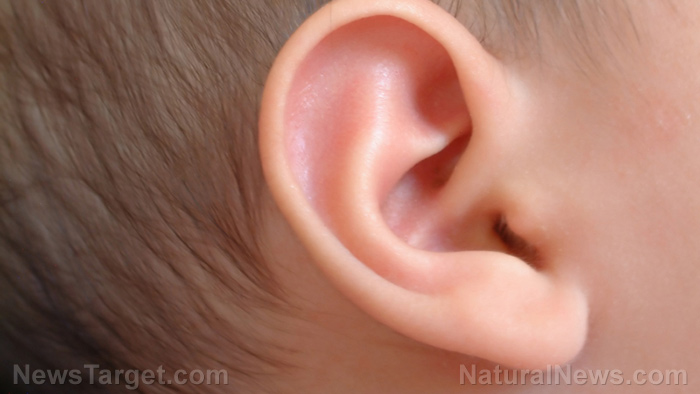Natural ear infection alternatives to antibiotics proven safer and more effective
According to existing scientific evidence, choosing natural, side effect-free herbal formulas to treat acute ear infection and pain over synthetic antibiotics with questionable therapeutic efficacy is a reasonable and well-founded option.
(Article republished from
GreenMedInfo.com)
Acute otitis media (ear infection) is very common in children and usually accompanied by ear pain, fever and irritability. Although it is believed that 80% of the otitis cases resolve spontaneously without any treatment, the standard medical approach relies on the prescription of
antibiotics and anti-inflammatory drugs.
An independent review by the Cochrane Collaboration reports that antibiotic treatment for acute otitis is prescribed in 98% of cases in USA and Australia but only 38% in Netherlands. According to the latest guidelines of the American Academy of Pediatrics (AAP), the first line antibiotic treatment is based on moderate or broad spectrum drugs, such as amoxicillin and ciprofloxacin, while
NSAIDs and paracetamol (
Tylenol) are recommended for pain management. However, there is scientific evidence challenging not only the use of antibiotics, but the very necessity to use synthetic drugs to treat infection and ear pain.
A study published in the journal
Microbiology, Immunology and Infection in 2012 investigated the effectiveness of a herbal remedy consisting of essential oils from cloves, lavender and geranium in the alleviation of acute otitis symptoms and compared its effects to those of the commonly used 0.3%
ciprofloxacin antibiotic drops. The patients received three drops of the herbal or antibiotic formula every 12 hours. Both treatments achieved significant and comparable improvements in pain levels, swelling and numbers of microorganisms.
Another interesting study published in the journal
Pediatrics reports that the use of the widely used antibiotic amoxicillin may not be necessary at all for treating ear pain. In this rigorous double-blinded trial all patients received Naturopathic Herbal Extract Ear Drops (NHED) 5 times per day with or without local anesthetic but only half of the patients received additionally amoxicillin, representing the conventional therapeutic approach for acute otitis. Surprisingly, the ear pain improved significantly more in patients that
did not take the antibiotic, showing that antibiotics alone or even in combination with other effective remedies provide no therapeutic advantage. All the patients who took the herbal drops recovered much faster compared to the control group, which shows that even in self-healing otitis, a natural therapeutic solution can accelerate the course of the infection and alleviate the pain substantially. The authors of the study report that:
"...these herb, these herbal extracts have the potential to meet all of the requirements of appropriate medication that could be routinely used in the pediatric patient"
The existing scientific literature not only from confirms the antibiotic efficacy of herbal therapies within the specific clinical context, but also challenges the reasoning behind the very use of synthetic antibiotics in the first place. The aforementioned natural therapies have no recorded side effects, while both amoxicillin and ciprofloxacin are well known to cause moderate nausea, diarrhoea, vomiting, rash and affect the liver to 1% of patients. The independent review from Cochrane Collaboration reports that for every 14 children treated with standard antibiotics, one child has an episode of vomiting, diarrhoea or a rash. Apart from these considerations, there are two black box warnings for ciprofloxacin (and all the antibiotics of this class, called fluoroquinolones) regarding the increase in spontaneous tendon ruptures (1.9-fold increase) and the possibility of worsening symptoms of
myasthenia gravis symptoms, which could lead to life threatening complications.
Read more at:
GreenMedInfo.com
 Parler
Parler Gab
Gab










